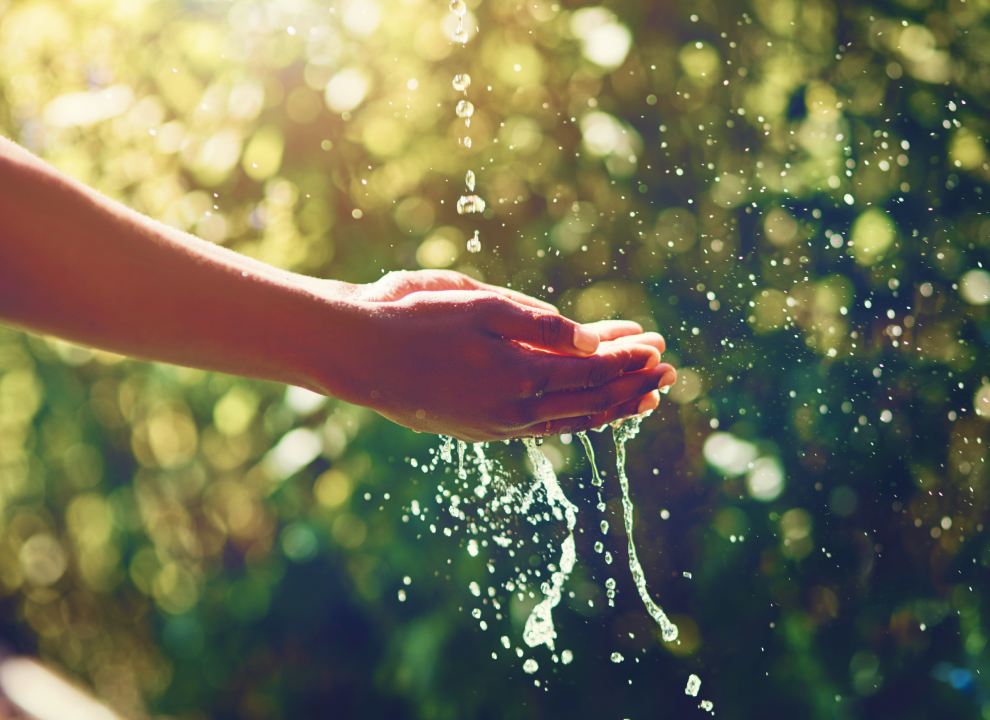
Clean world
Water
Water
With nearly half of our sales coming from products that have water as an ingredient, maintaining access to clean water is fundamental for us. We’ve found opportunities in our supply chain and product development areas to realize our water conservation goals while also reducing costs, distinguishing our brands, meeting consumers’ needs and growing our business. As we move forward on our water stewardship journey, our strategic focus is to complete localized risk assessments and create action plans that reflect the risks and issues unique to watersheds supporting the areas where we operate. For the good of our communities, our stakeholders and our business, we continue to support our facilities in managing their water use responsibly and seeking further efficiency gains. Since 2014, we’ve obtained third-party assurance of our water use.
Our goals
Our goals
- Drive continued water efficiency improvements that achieve or exceed our target of 1.68 gallons of water per case or product sold, compared to our 2018 baseline levels.
- Advance a more localized approach to water stewardship in high or extremely high baseline water stress areas.
- Between 2007 and 2018, we reduced our water consumption 36% on an intensity basis (per case of product sold) and 20% on an absolute basis. This represents a reduction of 207 million gallons of water.
- In 2019, we reset our water use baseline to calendar year 2018. We reduced our water withdrawals by 14% between 2018 and 2023, and our plants were able to drive efficiencies and reduce water withdrawals by 10% per case of product sold between 2018 and 2023.
- Since 2019, we’ve also conducted annual water risk analyses of our operations using Water Resource Institute’s Aqueduct Tool.
- In 2023 we identified 20 locations in high or extremely high baseline water stress areas. The locations include seven plants, three distribution centers and one office, representing 27% of our global water use. Of these 20 facilities, ten represent 82% of Clorox’s water withdrawals in high to extremely high baseline water stress areas.
- Our facilities in Mexico City, Mexico, and Quilicura, Chile, are implementing localized water action plans. Since 2018, we have maintained consistent annual water withdrawals in Mexico City and reduced water use 25% in Quilicura, on an intensity basis – per case of product sold.
- Our Saudi joint venture has identified and implemented water savings/improvements to reduce their water footprint on a product basis.
Improvements in infrastructure and equipment
Our water conservation efforts include several water recycling infrastructure and equipment upgrade initiatives as well as changes to some of our water management practices. Most notably, our Kingsford plants in Parsons, West Virginia, and Belle, Missouri, both reduced their water consumption by more than 40% primarily through investments in water recycling infrastructure and replacement of water with air compressor systems.
We’ve also made other improvements, such as upgrading our filtration and recovery systems. We performed extensive water process mapping and conservation training at all manufacturing facilities, resulting in improved plant-level water practices.
Meanwhile, work on water restoration continues through the expansion and improvement of Clorox’s current wastewater treatment infrastructure.
Water saved with concentrated formulas
Clorox began producing a 25% more concentrated bleach formula in 2020, saving resources across the product’s lifecycle. Relative to the comparable product previously available on the market, our current concentrated bleach product is estimated to save over 20 million gallons of water annually. In addition to using less water to provide the same dose, this concentrated formula also requires less packaging and weighs less than our previous bleach (on a per-dose basis), reducing its manufacturing and distribution carbon footprint and making the new version a win for the environment.
We’ve also introduced a more concentrated line of Pine-Sol Multi-Surface Cleaners that are designed to reduce water usage per dose. With more cleaning power packed into every ounce, the new offerings use less packaging and last twice as long, making it easier for consumers to do more ewith less waste while still killing 99.9% of germs* — even when diluted. This innovation also reduces the amount of water we’re shipping per dose, with the goal of reducing out shipping footprint. These Pine-Sol bottles are made with a minimum of 50% post-consumer recycled plastic, contributing to our ESG goal of 50% combined reduction in virgin plastic and fiber packaging by 2030 and dgiving new life to materials that may otherwise contribute to landfill waste.
*Pine-Sol® Pine only
Our other ESG pillars
-
Healthy lives
Healthy lives
Improving people’s health & well-being.LEARN MORE -
Thriving communities
Thriving communities
Investing in our people and communities to contribute to a more equitable world.LEARN MORE
